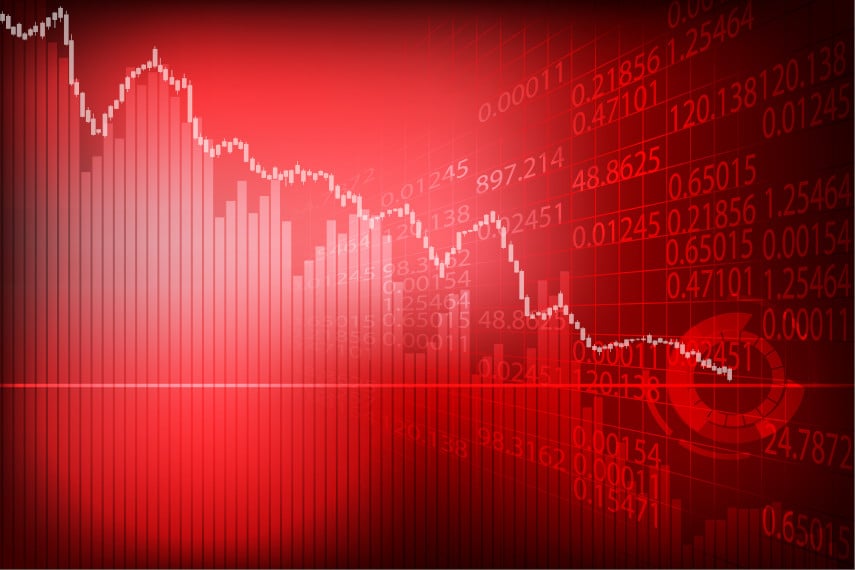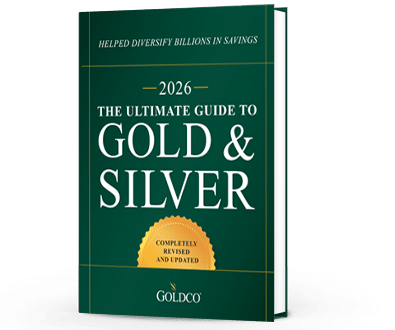6 Indicators of a Potential Recession
It seems that in the media today there are more and more mentions of the dreaded R-word: recession With growing economic uncertainty, the threat of potential recession seems to be growing as...
Economy

It has become increasingly obvious that the US economy is faltering and on the verge of another recession or financial crisis. But the question everyone wants to know is when it will happen? And when it does, investors want to know how best to protect their assets.
Looking at stock markets, you could be forgiven for thinking that all is well with the economy. After all, stock markets are still near all-time highs, and have seen double digit growth this year. But stock markets have always been lagging indicators.
Stock markets peaked in October of 2007 before beginning their long and steady decline through March of 2009. But the recession officially started in December 2007, only two months after that all-time high.
Meanwhile, the mainstream financial media was full of pundits proclaiming all through 2008 that the economy was doing just fine, that mortgage market weakness wouldn’t affect the broader economy, and that there was no risk of a recession. Doesn’t that sound familiar to what we’re hearing again today?
We have to remember that many of the pundits, reporters, and analysts have a vested interest in making people think that the economy is healthy. Many don’t bother digging under the hood to see what’s really going on because they don’t want to be the bearers of bad news. So if you really want to know what’s going on, you’ll likely need to do your own legwork.
With that being said, there are ways you can figure out just how overvalued markets are. Right now there are four major warning signs.
We’re witnessing some interesting attitudes towards stock markets today. On the one hand, professional and institutional investors have become increasingly bearish on stocks. They see the underlying economic fundamentals, the economic difficulty ahead of us, and they think that stocks are likely going to see a correction.
On the other hand you have retail investors, individuals like you and me, who are more heavily invested in stocks than just about any time in history. Many of them express attitudes similar to those last seen during the dotcom bubble, expressing the belief that stocks will continue to rise no matter what.
Many of those investors believe that the Federal Reserve will jump in to bail out markets at the first sign of weakness. But they may find out that their trust in the Fed’s ability to rescue the economy is misplaced.
The US economy was already staring down a possible recession two years ago. Overnight funding markets began showing signs of weakness, prompting the Fed to jump in with monetary assistance.
COVID kind of put things on hold, although the lockdowns created their own type of mini-recession. The Fed jumped in with abandon, creating trillions of dollars out of thin air to enable the federal government’s fiscal stimulus spending. And that may have sped up the rate at which the next major financial crisis is developing.
The Fed’s trillions of dollars of money creation have resulted in inflation that is rising and could spiral out of control. Now the Fed finds itself in a bit of a bind.
Normally rising inflation would call for monetary tightening. But monetary tightening would almost assuredly cause markets to crash.
With a weakening economy, continued high unemployment, and other headwinds, pressure is on the Fed to maintain monetary easing. But further easing will cause inflation to rise even further.
Expect the Fed to err on the side of easing rather than tightening. And that could spur a crisis as inflation continues to rise and investors lose confidence in financial markets and in the Fed’s ability to fix things.
With Chairman Powell having just been renominated to a second term as Fed Chairman, the obvious expectation is that he is going to continue keeping monetary policy loose. And if that ends up being the case, don’t expect prices to go down anytime soon.
Businesses around the country have already had a tough time over the past two years. From being forced to shut down, being subject to stringent requirements when they first opened up, and now being subjected to vaccine mandates, businesses have been at the mercy of the government.
With millions of people still out of work, and many deciding not to return to the workforce, companies are finding it difficult to find labor. And with supply chains still in turmoil, they’re also finding it difficult to find parts, materials, and other inputs to produce their goods.
The hard reality is that the economy just isn’t going to get back to normal anytime soon. Supply chains in turmoil plus rising prices means that the future will be completely unpredictable for companies and consumers. It’s increasingly likely that the future will bring even more uncertainty and more difficulty for businesses, and consumers will feel the effects in the form of further shortages and higher prices.
The problem with market crashes is that they can’t be predicted. They very often come in two forms: a massive drop like in 1929, or a slow, steady deterioration like in 2008. The former is an obvious crash, while the latter is more difficult to diagnose.
In all likelihood, we’ll see the next major crisis occur in a similar way as in 2008. Markets will start to slide, and Wall Street and Washington will be in denial that anything is wrong as they try to keep investors from heading to the exits.
But anyone who sees the writing on the wall knows that the next crash is more a matter of when, not if. Many have already started taking steps to protect their assets, such as by buying precious metals like gold and silver.
Gold and silver have a track record of performing well during times of economic uncertainty and financial turmoil. During the stagflation of the 1970s, gold and silver prices rose at an annualized rate of more than 30% over the course of the decade. And in the aftermath of the 2008 crisis, gold nearly tripled in price while silver more than quintupled.
That’s how powerful gold and silver can be during times of economic distress. When stocks turn south, gold and silver often perform better, and those who own gold and silver could see their assets protected from loss. But taking on that protection means buying gold and silver before the crash comes and not waiting until it’s too late.
If you want to protect your savings from the ravages of the next market crash, call the precious metals experts at Goldco today. From direct purchases of gold and silver coins to starting a precious metals IRA, Goldco’s experts can inform you of the options available to you and help you navigate the process.
Don’t wait any longer to protect your precious savings and investments. Call Goldco today and start safeguarding your wealth with gold and silver.

